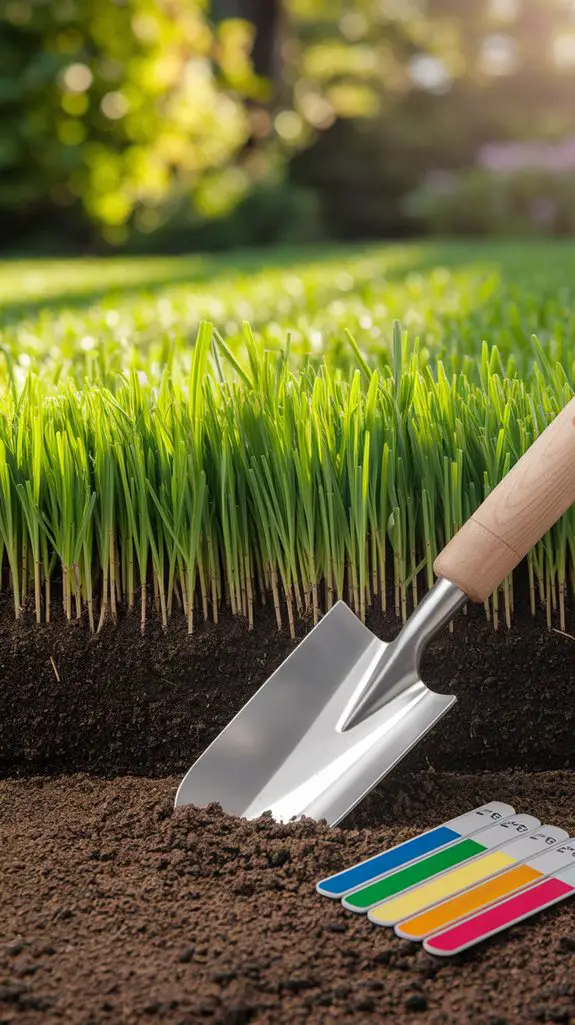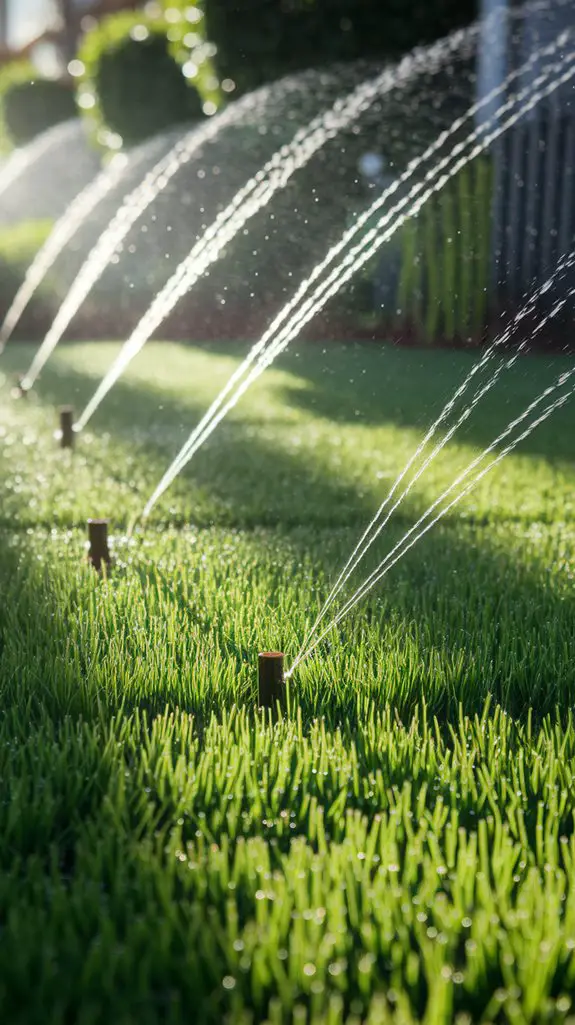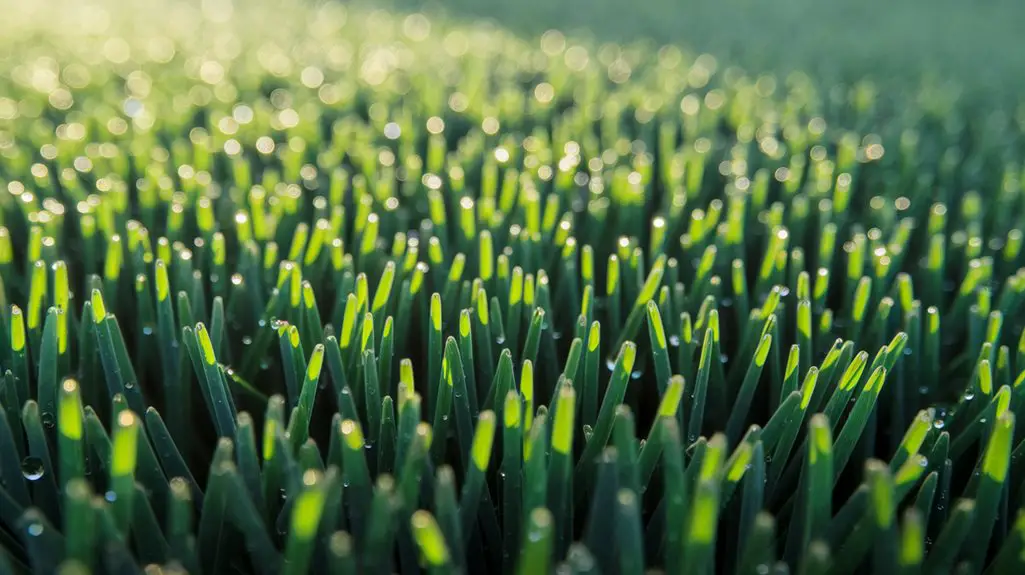Like Midas with his golden touch, you too can transform your ordinary lawn into a verdant masterpiece. You’ll need more than luck to achieve that picturesque carpet of green that neighbors envy and garden magazines showcase. The secret lies in understanding the science behind grass growth, from selecting region-appropriate seed varieties to implementing precise watering techniques. The journey to lush turf involves several critical steps that can make the difference between patchy disappointment and stunning success.
Choosing the Right Grass Seed for Your Climate
When selecting grass seed for your climate zone, it’s crucial to understand the specific environmental conditions your lawn will face throughout the year.
Cool-season grasses like Kentucky bluegrass, perennial ryegrass, and fescues thrive in northern regions with temperatures between 60-75°F, while warm-season varieties such as Bermuda, Zoysia, and St. Augustine prefer 80-95°F southern climates.
Consider your region’s annual rainfall, typical drought periods, soil composition, and sun exposure.
Shift zones require careful selection—often blends of both cool and warm-season varieties. For shaded areas, choose shade-tolerant species like fine fescues.
High-traffic lawns demand durable options such as tall fescue or Kentucky bluegrass.
Match seed specifications to your USDA hardiness zone for peak growth potential and disease resistance.
Essential Soil Testing and Preparation Methods

Three fundamental soil tests form the foundation of proper lawn preparation: pH analysis, nutrient composition assessment, and soil structure evaluation. Before seeding or fertilizing, you’ll need to understand your soil’s current condition to make targeted improvements.
| Test Type | Ideal Range | Action if Below Range | Action if Above Range | Testing Frequency |
|---|---|---|---|---|
| pH | 6.0-7.0 | Add lime | Add sulfur | Annually |
| Nitrogen | 5-10 ppm | Apply nitrogen fertilizer | Reduce fertilization | Bi-annually |
| Phosphorus | 12-25 ppm | Add bone meal | No action needed | Annually |
| Potassium | 75-150 ppm | Apply potash | No action needed | Annually |
| Texture | Loamy | Add organic matter | Add sand or drainage | Every 3 years |
Collect samples from multiple lawn areas at 4-6 inches deep. You can purchase DIY testing kits or send samples to your local extension office for thorough analysis.
Proper Watering Techniques for a Thriving Lawn

The four cornerstone principles of effective lawn irrigation revolve around timing, depth, frequency, and distribution.
Water between 4-10 AM to minimize evaporation and fungal growth that evening watering encourages. Apply 1-1.5 inches of water per session, allowing moisture to penetrate 6-8 inches deep to promote robust root development.
Don’t follow a rigid schedule; instead, water when your lawn shows signs of stress—folded blades, dulled color, or visible footprints. Most established lawns require irrigation only 2-3 times weekly during peak summer months.
Ensure uniform coverage by using oscillating sprinklers for rectangular areas and rotary sprinklers for circular zones.
Consider installing rain sensors to prevent unnecessary watering after precipitation and adjust your regimen seasonally to accommodate rainfall patterns. Additionally, using eco-friendly lawn care techniques can further enhance the sustainability of your watering practices.
Strategic Fertilization Schedules and Products
Proper irrigation sets the foundation for lawn health, but water alone can’t sustain vibrant turf without appropriate nutrients. You’ll need to implement a strategic fertilization schedule based on your grass type and local climate conditions. Additionally, incorporating eco-friendly practices can enhance soil health and promote a lush lawn.
| Season | Cool-Season Grasses | Warm-Season Grasses |
|---|---|---|
| Spring | Apply nitrogen-rich fertilizer (20-5-10) at 1 lb N/1000 sq ft | Light feeding (15-0-15) after full green-up |
| Summer | Limited feeding or none; apply iron supplements | Heavy feeding (16-4-8) at 1 lb N/1000 sq ft |
| Fall | Major feeding (22-8-10) twice, 6 weeks apart | Potassium-rich winterizer (10-0-20) by mid-September |
For best absorption, apply fertilizer when soil temperatures reach 55°F for cool-season and 65°F for warm-season varieties. Always use a calibrated spreader and water thoroughly after application to prevent nitrogen burn.
Effective Mowing Practices for Healthy Growth
While fertilization provides necessary nutrients for your lawn, mowing techniques directly impact grass density, root development, and overall resilience.
Maintain a cutting height of 2.5-3.5 inches for cool-season grasses and 1-2 inches for warm-season varieties. Never remove more than one-third of the blade length in a single mowing session to prevent stress.
Sharpen mower blades bi-monthly during growing seasons to guarantee clean cuts that heal quickly.
Alternate mowing patterns weekly to prevent soil compaction and encourage upright growth. During summer heat, raise cutting height slightly to improve drought tolerance and shade soil.
For best results, mow when grass is dry and return clippings to the lawn—they’ll decompose rapidly, returning valuable nitrogen to the soil while reducing thatch buildup. Additionally, proper lawn care can significantly enhance the health of your vegetable garden by promoting better drainage and nutrient availability.
Preventing and Treating Common Lawn Problems
Even the most meticulously maintained lawns can succumb to various problems that compromise aesthetic appeal and overall health. You’ll need to identify issues promptly and implement targeted interventions.
For fungal diseases like brown patch or dollar spot, apply appropriate fungicides and reduce evening irrigation to minimize leaf wetness periods.
Combat grub infestations with nematodes or milky spore in early summer before damage becomes visible.
Address compaction by aerating annually, particularly in high-traffic areas.
For persistent weed encroachment, apply pre-emergent herbicides in early spring before soil temperatures reach 55°F.
Target existing broadleaf weeds with selective post-emergent formulations during active growth phases.
Bare patches should be overseeded during ideal germination periods—fall for cool-season grasses and late spring for warm-season varieties.
Conclusion
Your path to lush green grass isn’t just a walk in the park—it’s a science requiring precise implementation of each critical step. You’ll achieve ideal results by selecting climate-appropriate seed varieties, maintaining proper soil pH (6.0-7.0), implementing early morning watering (0.5-1 inch weekly), following NPK-balanced fertilization schedules, cutting at 3-3.5 inches height, and promptly addressing fungal or insect infiltrations through targeted treatments.




